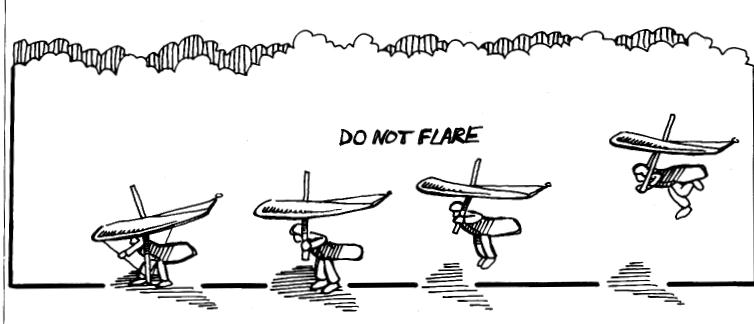Strong Wind Landing
This is usually a 'top' landing. It
is easier to judge than the nil wind landing as the relative speeds are low, but
if you get it wrong the penalties can be very high. Getting blown over, or
landing out of wind in string conditions can be very expensive and very painful.
When landing in strong winds you will almost always encounter turbulence of some
degree and will always encounter wind gradient. So from the 'ideal position' you
should:
INCREASE
SPEED
Hands shoulder height in uprights.
Come out of prone. Pulling at least 5 mph above max glide (2-3" of pull). Ride
the bumps (don't tense up). Look ahead. Adjust speed as necessary (don't let it
drop off as you descend through the gradient ). Keep the glider straight into
wind.
TOUCHDOWN
Alter speed
to give firm touchdown with slight forward speed. DO NOT FLARE. Get base bar on
the ground promptly. Step
FINISH
If very
strong wait for help. Unclip. Move out of the landing area. Park glider flat,
well secured
Common
faults
Allowing the glider to be turned out
of wind on the approach (ouch!) Trying to achieve very gentle touchdown: (1)
results in glider waffling about just above the ground at mercy of gusts etc.,
(2) results in glider being ground looped
when pilot's weight transfers to ground.
Flaring out. New pilots used to light wind bottom landings tend to do this on
early strong wind landings as a reflex reaction to their feet touching the ground.
Very dramatic, very painful and very expensive (As the glider tries to do a backward
somersault).
Relaxing after touchdown. This is the
most dangerous phase. The glider should be landed, lowered so the base bar is on
the ground and the front wires grabbed all in one continuous movement, using the
slight forward momentum of the glider. Don't under any circumstances stand
there, clipped in, with the glider's nose in the air.
